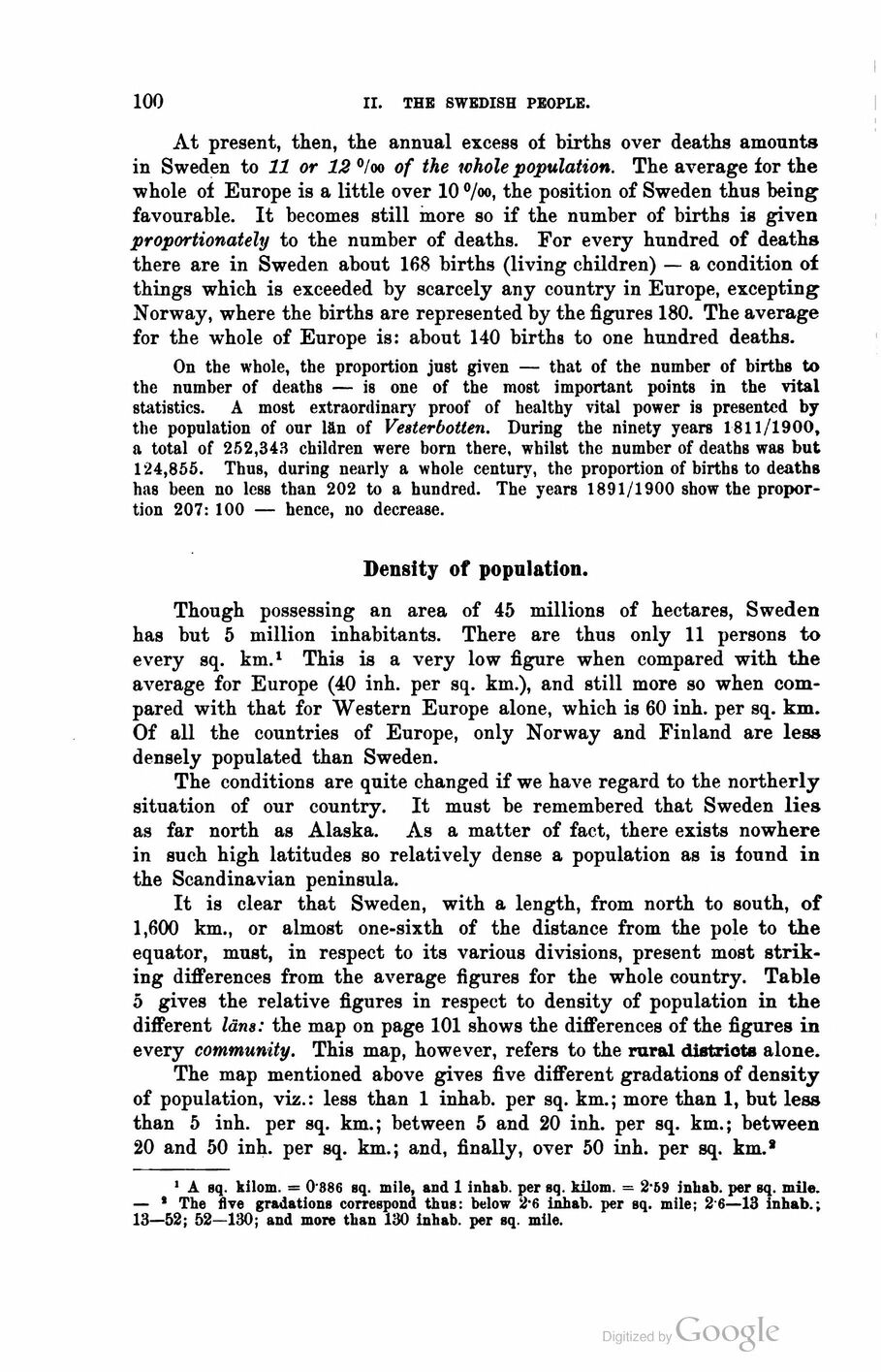
Full resolution (JPEG) - On this page / på denna sida - First part - II. The Swedish People - 2. Demography of Sweden - Population at different periods - Density of population

<< prev. page << föreg. sida << >> nästa sida >> next page >>
Below is the raw OCR text
from the above scanned image.
Do you see an error? Proofread the page now!
Här nedan syns maskintolkade texten från faksimilbilden ovan.
Ser du något fel? Korrekturläs sidan nu!
This page has never been proofread. / Denna sida har aldrig korrekturlästs.
100
II. TH B SWEDISH PEOPLE.
At present, then, the annual excess of births over deaths amounts
in Sweden to 11 or 12 °/oo of the whole population. The average for the
whole of Europe is a little over 10 °/oo, the position of Sweden thus being
favourable. It becomes still more so if the number of births is given
proportionately to the number of deaths. For every hundred of deaths
there are in Sweden about 168 births (living children) — a condition of
things which is exceeded by scarcely any country in Europe, excepting
Norway, where the births are represented by the figures 180. The average
for the whole of Europe is: about 140 births to one hundred deaths.
On the whole, the proportion just given — that of the number of births to
the number of deaths — is one of the most important points in the vital
statistics. A most extraordinary proof of healthy vital power is presented by
the population of our län of Vesterbotten. During the ninety years 1811/1900,
a total of 252,343 children were born there, whilst the number of deaths was but
124,855. Thus, during nearly a whole century, the proportion of births to deaths
has been no less than 202 to a hundred. The years 1891/1900 show the
proportion 207: 100 — hence, no decrease.
Density of population.
Though possessing an area of 45 millions of hectares, Sweden
has but 5 million inhabitants. There are thus only 11 persons to
every sq. km.1 This is a very low figure when compared with the
average for Europe (40 inh. per sq. km.), and still more so when
compared with that for Western Europe alone, which is 60 inh. per sq. km.
Of all the countries of Europe, only Norway and Finland are less
densely populated than Sweden.
The conditions are quite changed if we have regard to the northerly
situation of our country. It must be remembered that Sweden lies
as far north as Alaska. As a matter of fact, there exists nowhere
in such high latitudes so relatively dense a population as is found in
the Scandinavian peninsula.
It is clear that Sweden, with a length, from north to south, of
1,600 km., or almost one-sixth of the distance from the pole to the
equator, must, in respect to its various divisions, present most
striking differences from the average figures for the whole country. Table
5 gives the relative figures in respect to density of population in the
different läns: the map on page 101 shows the differences of the figures in
every community. This map, however, refers to the rural distriota alone.
The map mentioned above gives five different gradations of density
of population, viz.: less than 1 inhab. per sq. km.; more than 1, but less
than 5 inh. per sq. km.; between 5 and 20 inh. per sq. km.; between
20 and 50 inh. per sq. km.; and, finally, over 50 inh. per sq. km.2
1 A sq. kilom. = 0’S86 sq. mile, and 1 inhab. per sq. kilom. = 2-59 inhab. per sq. mile.
— * The five gradations correspond thus: below 2’6 inhab. per sq. mile; 2’6—13 inhab.;
13—52; 52—130; and more than 130 inhab. per sq. mile.
<< prev. page << föreg. sida << >> nästa sida >> next page >>